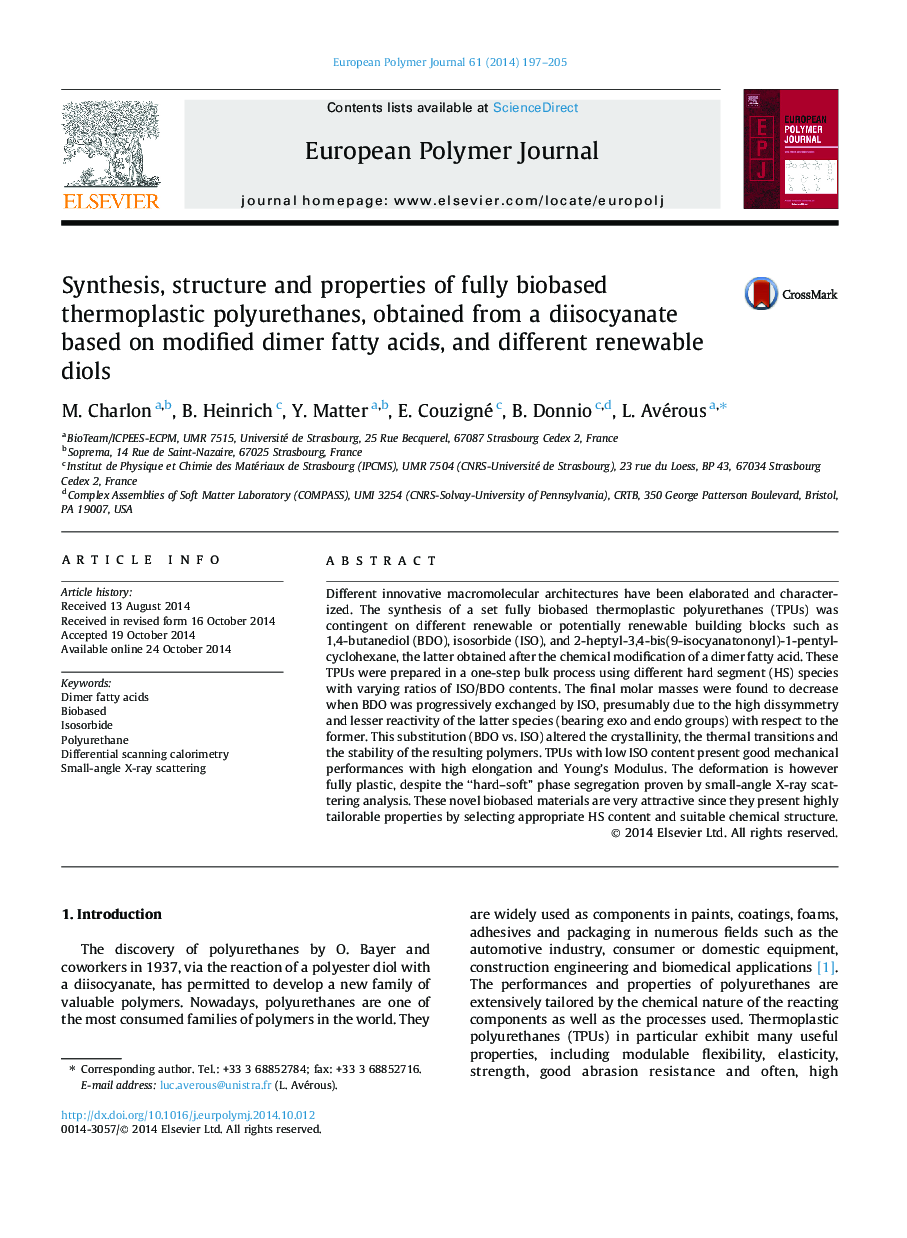| Article ID | Journal | Published Year | Pages | File Type |
|---|---|---|---|---|
| 1398011 | European Polymer Journal | 2014 | 9 Pages |
•New fully biobased thermoplastic polyurethanes were synthesized and characterized.•Copolymers are synthesized with three different biobased building blocks.•Substitution of BDO by ISO altered the thermal behavior, and crystallinity.•All polymers showed hard and soft segments segregation.•Polyurethanes with low ISO contents show high elongations and modulus.
Different innovative macromolecular architectures have been elaborated and characterized. The synthesis of a set fully biobased thermoplastic polyurethanes (TPUs) was contingent on different renewable or potentially renewable building blocks such as 1,4-butanediol (BDO), isosorbide (ISO), and 2-heptyl-3,4-bis(9-isocyanatononyl)-1-pentylcyclohexane, the latter obtained after the chemical modification of a dimer fatty acid. These TPUs were prepared in a one-step bulk process using different hard segment (HS) species with varying ratios of ISO/BDO contents. The final molar masses were found to decrease when BDO was progressively exchanged by ISO, presumably due to the high dissymmetry and lesser reactivity of the latter species (bearing exo and endo groups) with respect to the former. This substitution (BDO vs. ISO) altered the crystallinity, the thermal transitions and the stability of the resulting polymers. TPUs with low ISO content present good mechanical performances with high elongation and Young’s Modulus. The deformation is however fully plastic, despite the “hard–soft” phase segregation proven by small-angle X-ray scattering analysis. These novel biobased materials are very attractive since they present highly tailorable properties by selecting appropriate HS content and suitable chemical structure.
Graphical abstractFigure optionsDownload full-size imageDownload as PowerPoint slide
